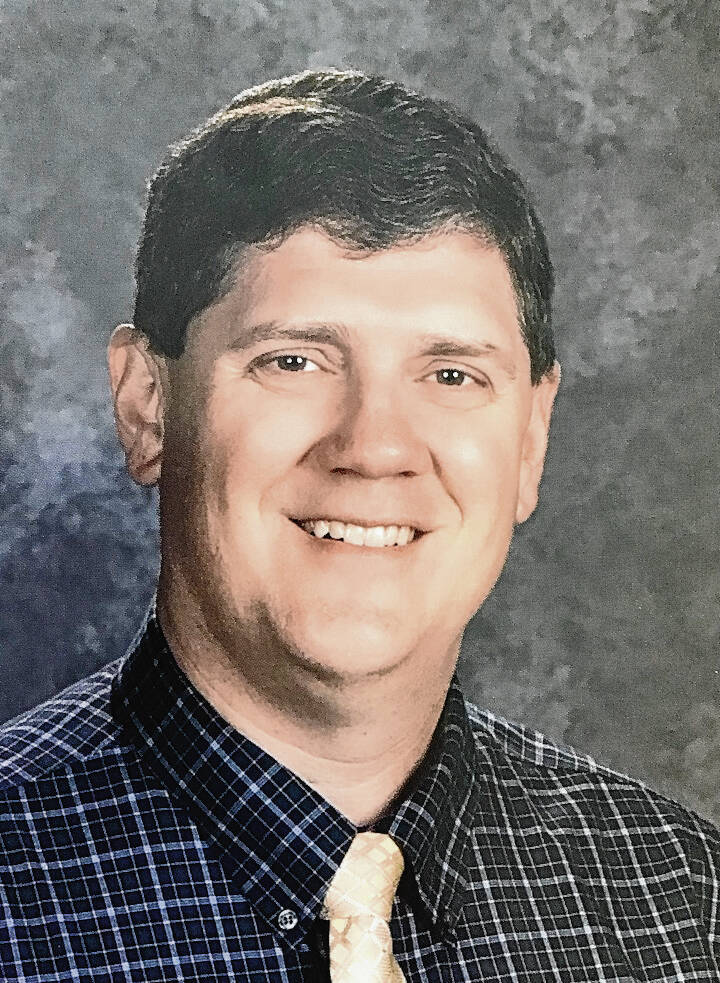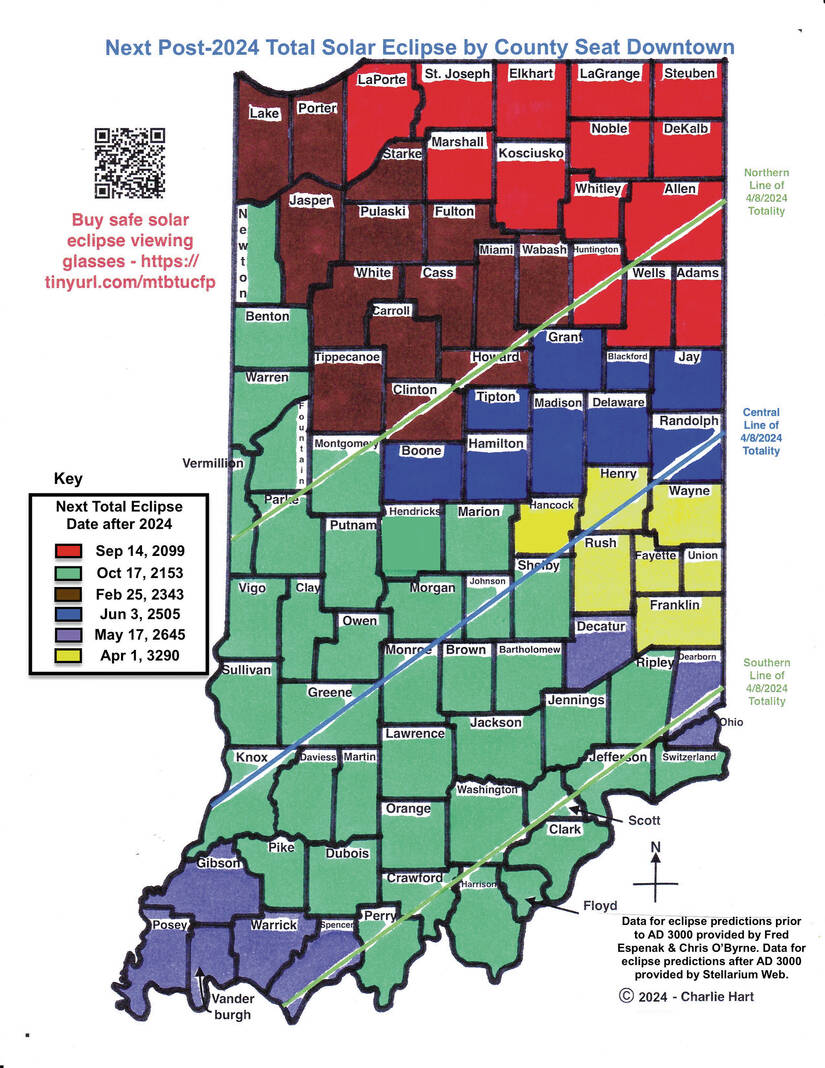
Charlie Hart

Graphic by Charlie Hart
I circled April 8, 2024, on my calendar almost 40 years ago because of a modest partial solar eclipse.
As a young child, I had two passions: astronomy and Purdue basketball.
In February 1979, my first-grade teacher told our class that a partial solar eclipse would soon visit Morristown Elementary School. We made pinhole projector boxes so we could view the eclipse that would come the following Monday. While totality visited Oregon, Washington, Idaho and Montana, we planned for a partial eclipse that would cover about 70% of the sun’s disk in central Indiana.
Sunday, it snowed. School was cancelled Monday, but the clouds parted enough to use a pinhole projector box at home. The TV news presented first-person accounts from the northwestern states of those in totality recounting the greatest day of their lives. I was thrilled to see my first partial eclipse, but I wanted to see a total one. I set out to find when that would happen in Indiana.
In those pre-internet days, the first-grade bookshelves at school weren’t of much assistance. The astronomy books told tales of nine planets (sorry, Pluto) and recent moon missions. I couldn’t find any with maps of future solar eclipses.
A few years later, I received an astronomy guidebook. I devoured information about stars and planets. It had a couple of pages about solar and lunar eclipses. And there it was … a global map with solar eclipse paths for the next 50 years. Two eclipse path lines got me excited: May 10, 1994, and April 8, 2024. Unfortunately the map was generic and didn’t show state and country lines. I couldn’t tell if either eclipse visited Indiana, but I knew they would be close. I noticed notations which said the 1994 eclipse would be annular, meaning the moon would be far enough from Earth in its orbit that a ring of the sun would still show when the moon crossed in front of it. It wouldn’t quite be a total eclipse.
Fast forward another few years, and I got a primitive night sky simulator for my family’s Apple II+ computer. I entered the 1994 and 2024 dates to see the positions of the sun and moon. The 1994 eclipse would be partial in Shelby and Hancock counties. I figured out that if I went to Purdue for college, it would be annular there while I was a student. I then joyously learned that the 2024 total eclipse would pass through central Indiana. I wasn’t sure what my future held, but I knew I wanted to be here on that date.
I went to college at Purdue and saw the annular eclipse of 1994. It was sunny, and my friends and I enjoyed the eclipse with a picnic lunch on the lawn as part of our senior week festivities. It was awesome, but it wasn’t total. In the past 30 years, I’ve seen a few partial eclipses. In 2017, I was tempted to skip a day of teaching at Greenfield Intermediate and drive to Nashville, Tennessee, for the total eclipse. Instead I stayed and shared a partial eclipse that covered 93% of the sun with my students and colleagues. April 8, 2024, would be my totality date.
As I pen this article in early 2024, I wonder if my perfect day is near. Could Purdue win its first men’s NCAA tournament championship on the same day that I finally see a total solar eclipse? The only obstacles in my way are pesky double-digit seeds and clouds. Here’s to lots of Boilermaker baskets and sunny skies.
Charlie Hart lives with his wife and two children in central Indiana. He works for a digital marketing firm in Fishers. Visit his company at www.fuelvm.com.